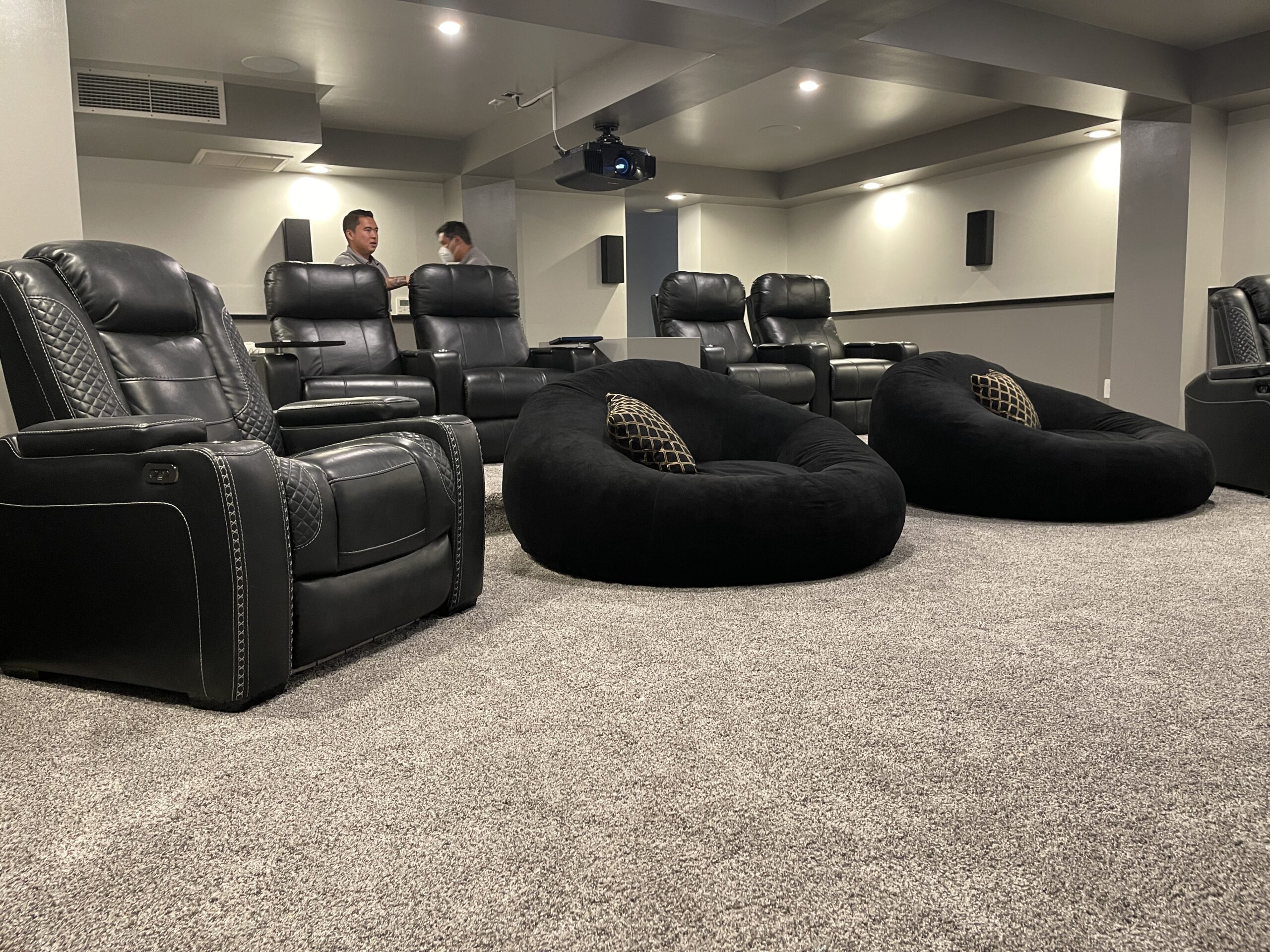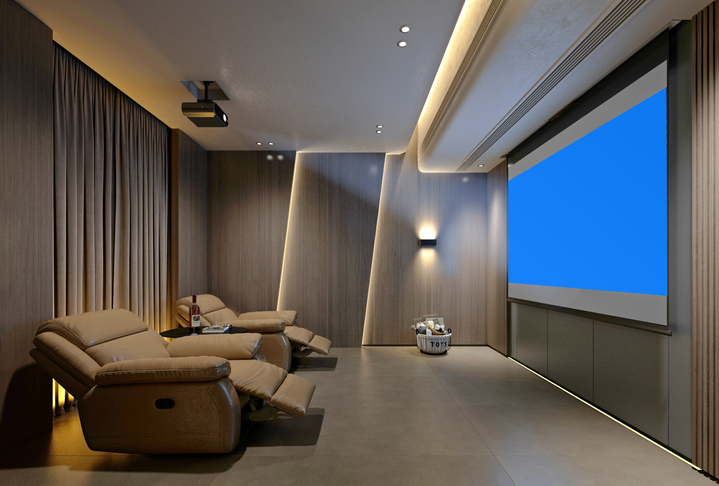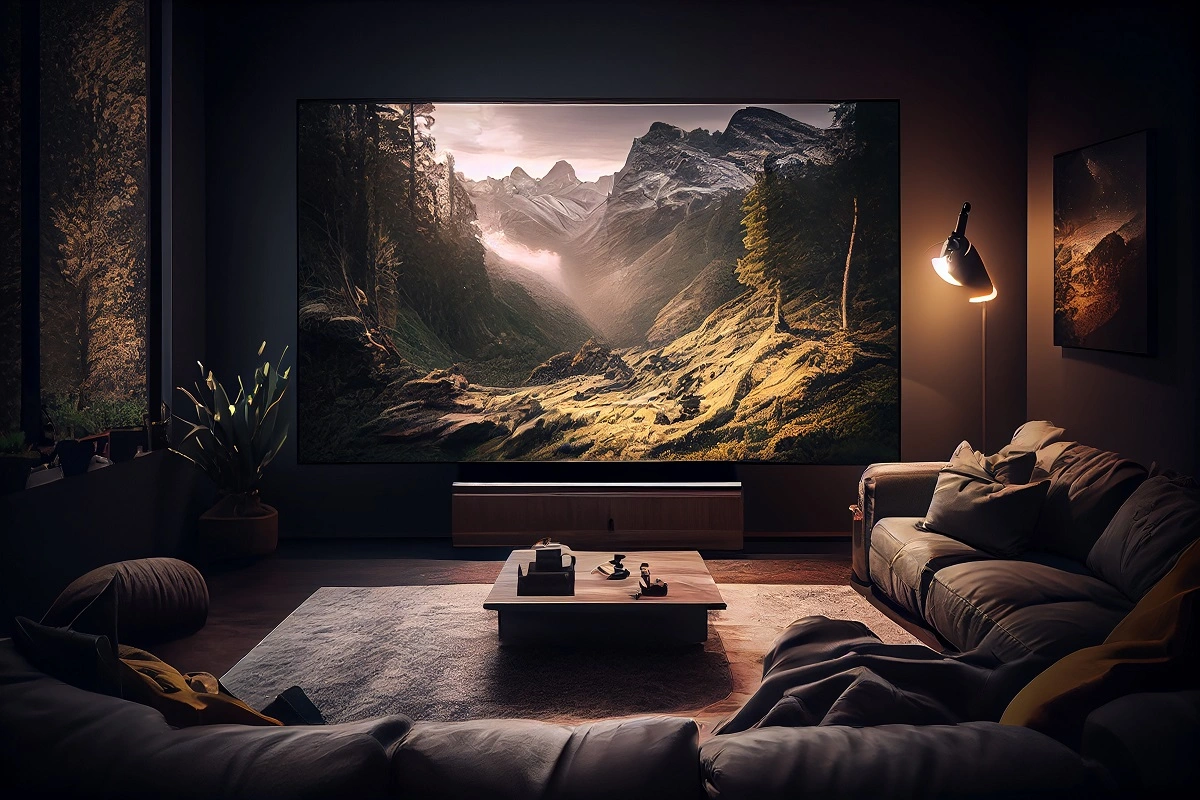Home Theater 101: Whatever You Need to Know for a Motion Picture Experience in the house
Developing a home cinema that measures up to the motion picture experience of an industrial theater involves mindful consideration of numerous components, consisting of screen choice, audio systems, and space layout. Each component plays a crucial function in attaining the preferred ambiance and performance. Whether you are contemplating the perfect screen dimension or the details of surround audio, comprehending these fundamentals is important. As we explore these essential components, it becomes apparent that the selections made can substantially affect your overall watching experience, leaving one to ponder just how these decisions will form your personal cinema.
Selecting the Right Screen
When establishing a home movie theater, selecting the best screen can make or damage the checking out experience - tampa home theater installation. The display works as the focal point of your setup, influencing image top quality, viewing angles, and total visual. Secret elements to consider include screen dimension, kind, and resolution
First, establish the proper screen size based upon your space measurements and seating range. A general standard is to sit about 1.5 to 2.5 times the diagonal display dimension for optimal watching. Next, select in between various display kinds, such as fixed-frame, motorized, or retracting displays, each offering distinct benefits. Fixed-frame displays usually provide the most effective image high quality, while mechanized options enable flexibility in area use.
Resolution is another vital factor. For a really immersive experience, think about a display made for 4K and even 8K content, making certain intensity and clarity. Furthermore, think about the display's gain, which influences illumination and comparison; a greater gain can boost brightness in well-lit rooms, while a lower gain may be preferable for darker atmospheres.
Choosing Sound Equipment
Audio devices is an important part of any kind of home cinema system, significantly enhancing the overall viewing experience. The selection of audio gear can determine the depth, clarity, and immersion of sound, vital for developing a motion picture ambience.
When picking audio tools, take into consideration a border stereo, which usually consists of a receiver, several speakers, and a subwoofer. A 5.1 or 7.1 network system is advised, where the initial number stands for the speakers and the second the speaker, supplying an immersive soundscape. The receiver is the heart of the system, handling audio and video signals, and need to sustain contemporary formats like Dolby Atmos for an enhanced spatial experience.
Quality audio speakers are important; seek versions that supply a balanced sound profile with great bass feedback. Floor-standing audio speakers can create richer sound, while shelf choices save room. Furthermore, take into consideration cordless choices for ease of installation, although wired systems usually supply exceptional performance.

Optimum Seating Plans
Producing an optimal home movie theater experience hinges considerably on optimal seating arrangements. The setup of seats plays an essential duty in both convenience and checking out quality, directly influencing the general cinematic experience.
First, consider the display dimension and seeing distance. An usual standard is to position seats at a range around 1.5 to 2.5 times the diagonal dimension of the screen. This guarantees an immersive experience advice without stressing the eyes.
Following, elevation is crucial. The back rows ought to be greater than the front to stay clear of blockages if your seating is in a tiered layout. For level seats, ensure that the front row is not as well near the screen, which everybody has a clear line of view.
In addition, take into consideration the setup in terms of social characteristics. Team seating can improve the communal experience, while specific seats may be chosen for personal watching.

Finally, focus on comfort with ergonomic seats that supports prolonged watching durations. Incorporating reclining chairs or cushioned seats can significantly boost the experience, making the home theater a recommended destination for both enjoyment and relaxation.
Lighting and Ambiance
Effective illumination and setting are necessary components of a well-designed home cinema, as they dramatically influence More Info the watching experience. The right illumination can enhance the cinematic feeling, while poor choices can detract from it. For ideal outcomes, think about a split lights strategy that includes ambient, job, and accent illumination.
Ambient lights offers general illumination, making certain that the space is not entirely dark, which can stress the eyes. Dimmer switches are highly recommended, permitting modifications based upon the web content being watched. Job lighting, such as wall sconces or floor lamps, provides functional illumination for activities like reading or navigating the space without disrupting the general atmosphere.
Accent lights can be utilized to highlight architectural features or develop centerpieces, adding depth and passion to the area. LED strip lights behind screens or along shelves can give a refined glow that boosts the aesthetic experience without overwhelming the viewer.

Wiring and Installation Tips
A well-planned wiring arrangement is crucial for attaining optimum performance in your home cinema system. Appropriate electrical wiring not only ensures high-grade sound and video signals but additionally improves the overall visual of your area. Begin by mapping out your format, determining where each component will certainly be put, including your screen, audio speakers, and receiver.
When selecting cables, focus on premium, properly gauged electrical wiring to decrease signal loss. HDMI cords need to be utilized for video links, while speaker cable should match the requirements of your speakers and amplifier. Choose in-wall rated wires to follow safety and security requirements and keep a clean appearance.

Verdict
In summary, developing an outstanding home theater experience needs careful consideration of different elements, including display option, audio tools, seating plans, illumination, and circuitry. Each component plays an essential role in achieving ideal efficiency and setting, ultimately boosting the pleasure of home entertainment. By prioritizing these factors, a motion picture ambience can be successfully duplicated, allowing for immersive seeing experiences that match standard movie theater settings. Interest to like this information in each location is essential for general satisfaction.
Producing a home theater that matches the cinematic experience of a business theater entails mindful factor to consider of several components, consisting of screen selection, sound systems, and room layout.When setting up a home movie theater, picking the best display can make or break the checking out experience. Next off, pick between various screen types, such as fixed-frame, motorized, or retracting screens, each offering distinctive advantages. For a truly immersive experience, take into consideration a display developed for 4K or even 8K material, making sure sharpness and clearness.In recap, producing an exceptional home cinema experience needs mindful consideration of numerous components, including screen option, audio equipment, seating setups, lights, and electrical wiring.